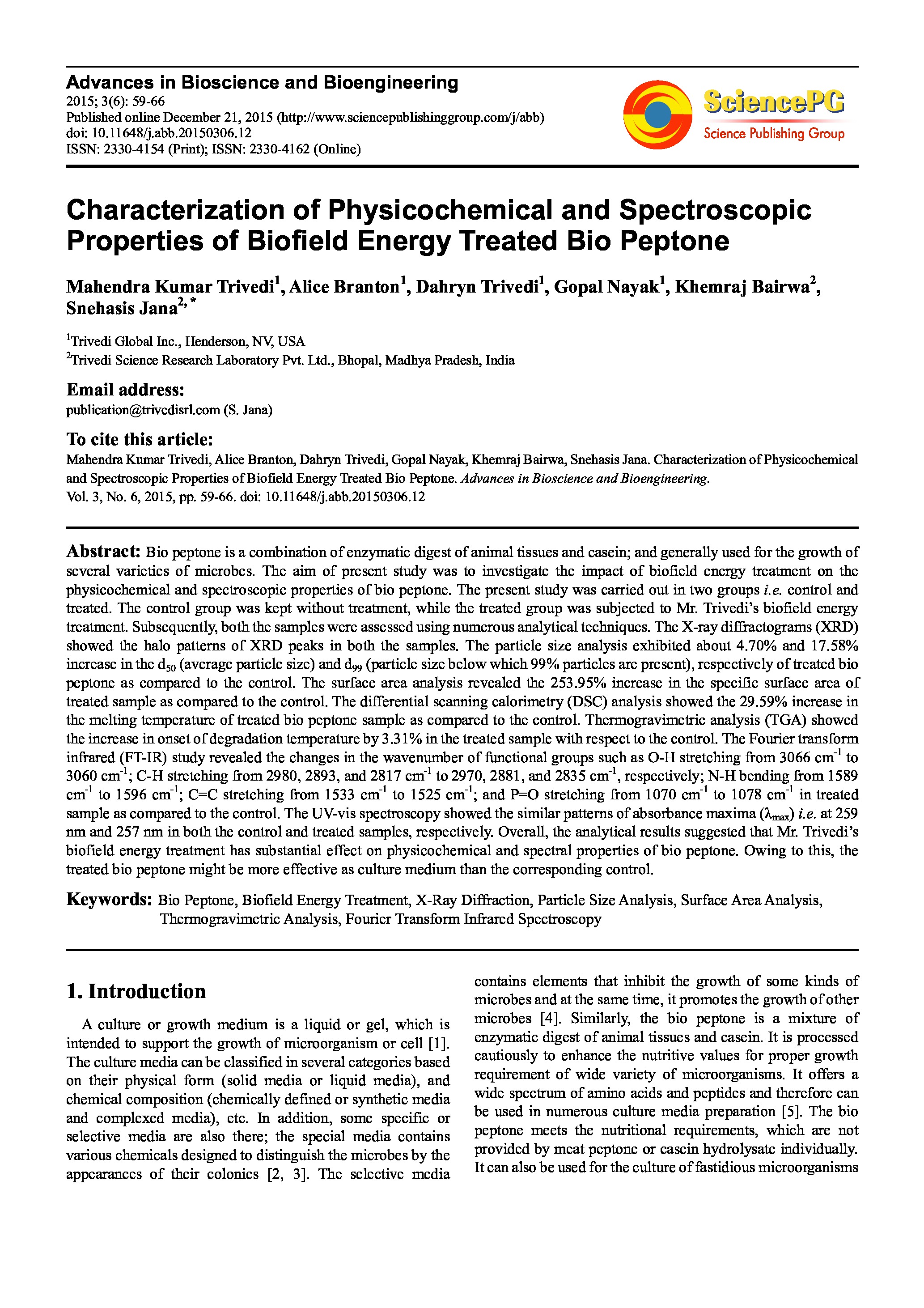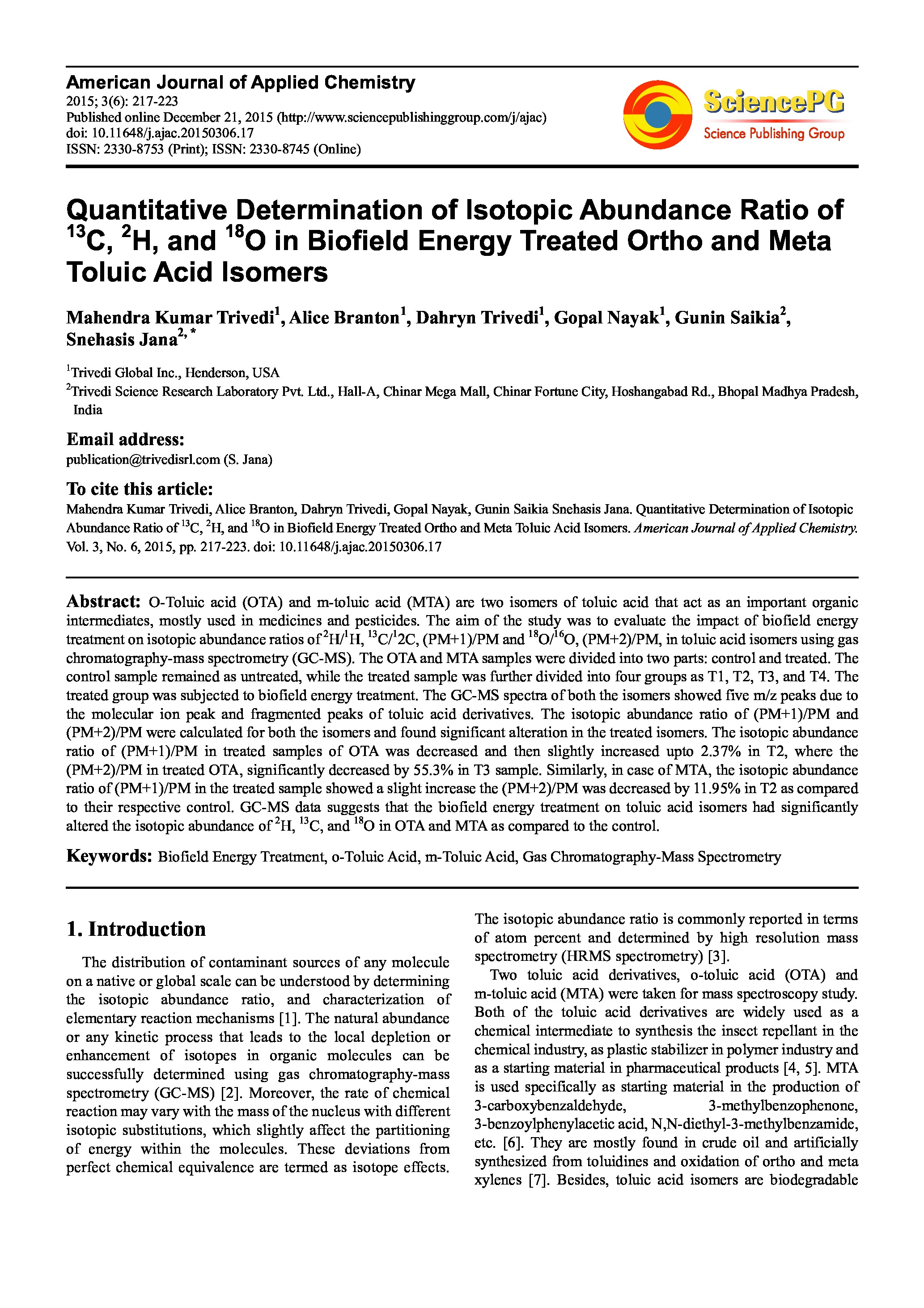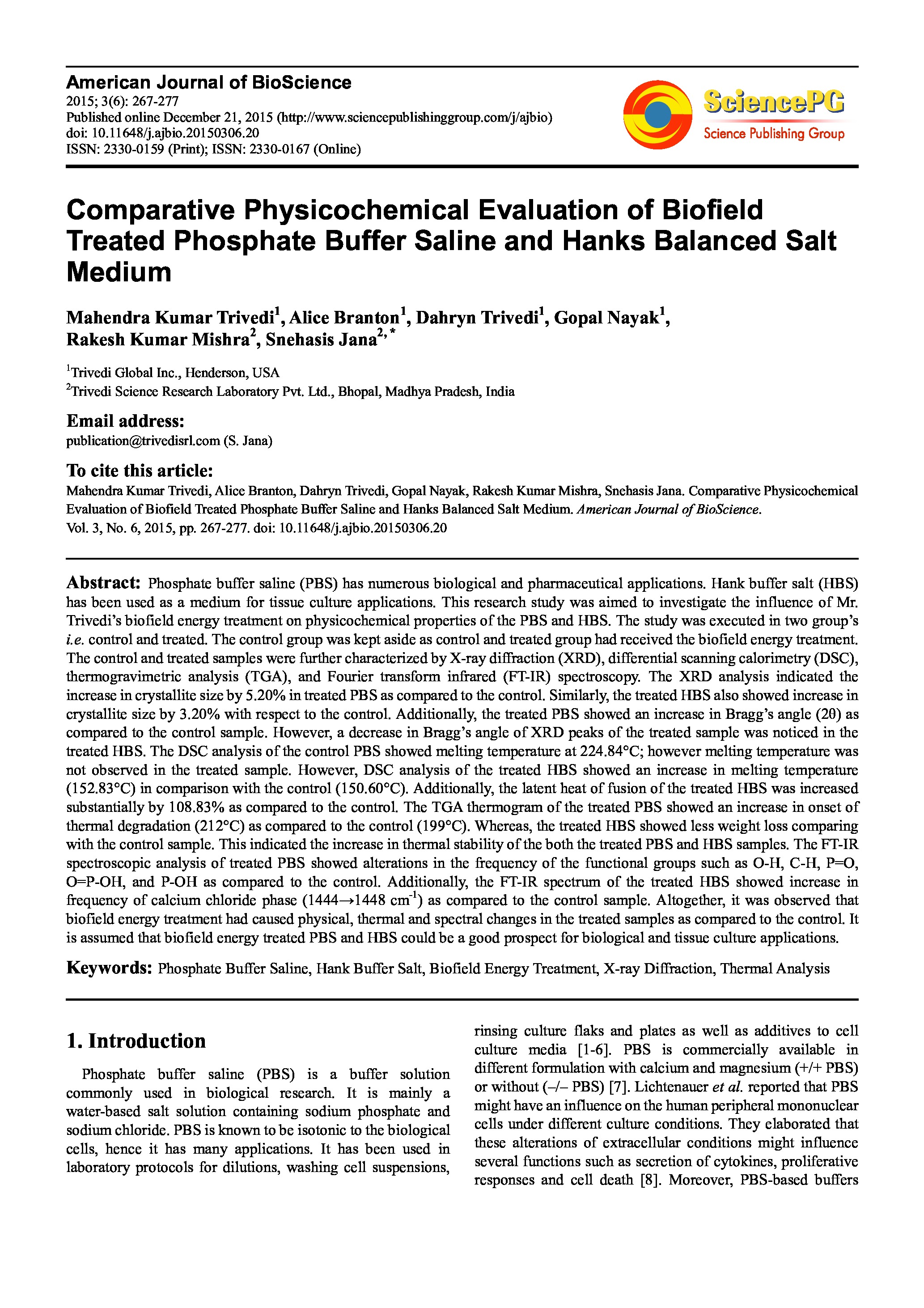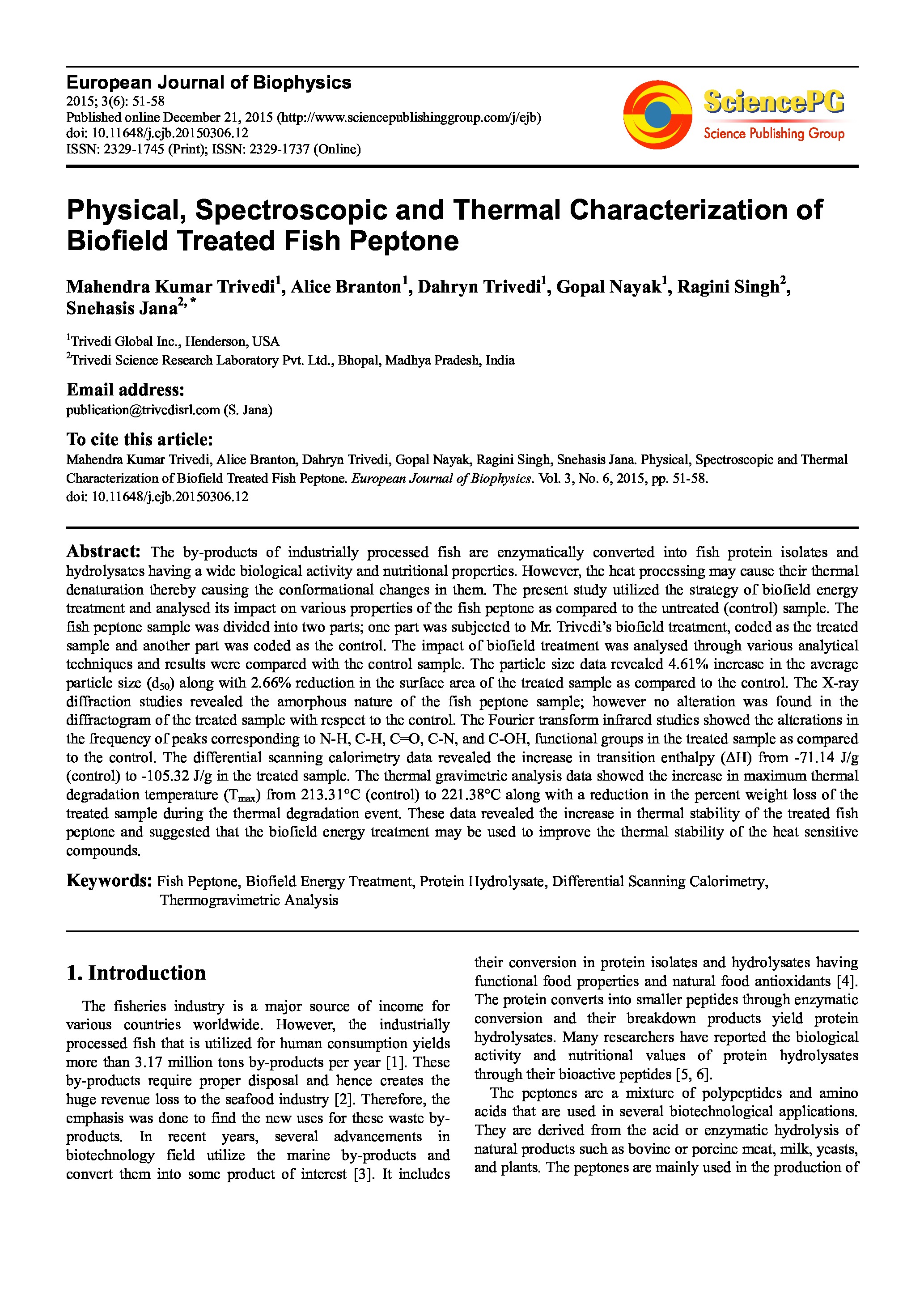Date of upload:
31.08.2016
Co-author:
Alice Branton, Dahryn Trivedi, Gopal Nayak, Rakesh Kumar Mishra, Snehasis Jana
Abstract:
Phosphate buffer saline (PBS) has numerous biological and pharmaceutical applications. Hank buffer salt (HBS) has been used as a medium for tissue culture applications. This research study was aimed to investigate the influence of Mr. Trivedi’s biofield energy treatment on physicochemical properties of the PBS and HBS. The study was executed in two group’s i.e. control and treated. The control group was kept aside as control and treated group had received the biofield energy treatment. The control and treated samples were further characterized by X-ray diffraction (XRD), differential scanning calorimetry (DSC), thermogravimetric analysis (TGA), and Fourier transform infrared (FT-IR) spectroscopy. The XRD analysis indicated the increase in crystallite size by 5.20% in treated PBS as compared to the control. Similarly, the treated HBS also showed increase in crystallite size by 3.20% with respect to the control. Additionally, the treated PBS showed an increase in Bragg’s angle (2θ) as compared to the control sample. However, a decrease in Bragg’s angle of XRD peaks of the treated sample was noticed in the treated HBS. The DSC analysis of the control PBS showed melting temperature at 224.84°C; however melting temperature was not observed in the treated sample. However, DSC analysis of the treated HBS showed an increase in melting temperature (152.83°C) in comparison with the control (150.60°C). Additionally, the latent heat of fusion of the treated HBS was increased substantially by 108.83% as compared to the control. The TGA thermogram of the treated PBS showed an increase in onset of thermal degradation (212°C) as compared to the control (199°C). Whereas, the treated HBS showed less weight loss comparing with the control sample. This indicated the increase in thermal stability of the both the treated PBS and HBS samples. The FT-IR spectroscopic analysis of treated PBS showed alterations in the frequency of the functional groups such as O-H, C-H, P=O, O=P-OH, and P-OH as compared to the control. Additionally, the FT-IR spectrum of the treated HBS showed increase in frequency of calcium chloride phase (1444→1448 cm-1) as compared to the control sample. Altogether, it was observed that biofield energy treatment had caused physical, thermal and spectral changes in the treated samples as compared to the control. It is assumed that biofield energy treated PBS and HBS could be a good prospect for biological and tissue culture applications.




